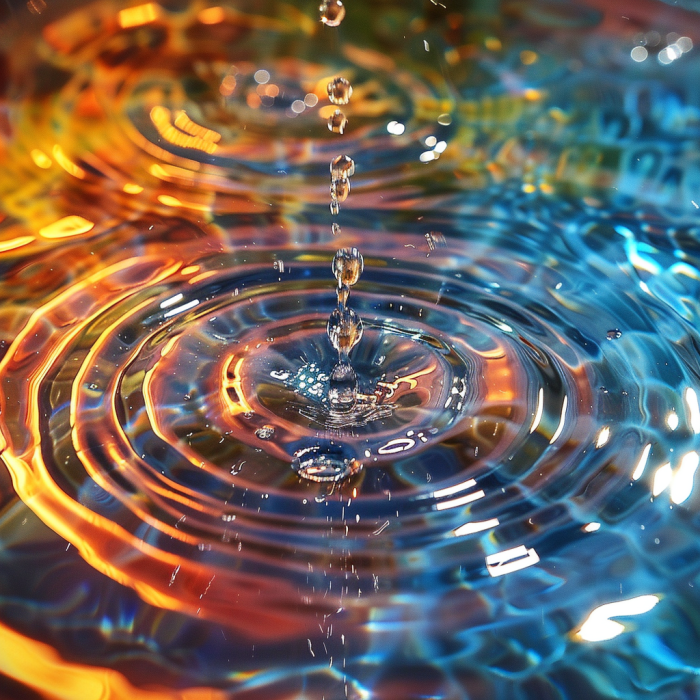When a Tibetan singing bowl is played near or directly in water, the vibrations created by the bowl have a fascinating and observable effect on the water. Here’s a detailed look at what exactly happens:
1. Sound Production in Tibetan Singing Bowls
Tibetan singing bowls produce sound when their rim or sides are struck or when they are rubbed with a mallet, causing the bowl to vibrate. These vibrations create sound waves, which are longitudinal waves consisting of compressions and rarefactions that move through the air.
2. Transmission of Sound Waves to Water
When these sound waves encounter water, they transition from being airborne to entering a denser medium. Sound travels faster and more effectively in water than in air because water molecules are more closely packed, allowing them to transmit the vibrations more efficiently. This transition causes the water to start vibrating at the frequency of the sound produced by the bowl.
3. Formation of Surface Patterns
The vibrations cause the water’s surface to move, creating patterns known as standing waves or Faraday waves. These are visible patterns that appear on the surface of the water due to the resonance between the vibrational frequency of the singing bowl and the natural frequencies of the water body. The surface of the water acts like a flexible membrane that can support these wave patterns.
4. Effect of Bowl’s Frequency and Water’s Natural Frequency
If the vibrational frequency of the bowl closely matches or resonates with the natural frequency of the water, more pronounced and defined wave patterns will appear. This phenomenon, known as resonance, results in larger amplitude waves on the water’s surface.
5. Node and Antinode Formation
The standing waves formed on the water surface consist of nodes and antinodes. Nodes are points on the surface where there is minimal or no movement, while antinodes are points where the movement is maximum. These points shift rapidly, creating dynamic and often symmetric patterns that can be both seen and felt.
6. Visualization of Sound Waves
The patterns formed by the vibrations offer a visual representation of the sound waves’ impact on a fluid medium. These patterns can vary greatly depending on the shape of the bowl, the way it is played, the water’s depth, and the container’s shape holding the water.
7. Energy Transfer and Dissipation
As the bowl continues to vibrate, energy is transferred from the bowl to the water, causing continuous movement until the energy dissipates. This dissipation of energy happens due to the natural resistance of water to flow (viscosity) and the friction between the water and its container.
8. Therapeutic Implications
The physical vibrations in the water are thought to have therapeutic effects when experienced directly, such as during sound baths where participants are in close contact with the water. These vibrations can stimulate the skin and muscles, potentially leading to improved circulation, relaxation, and pain relief.

